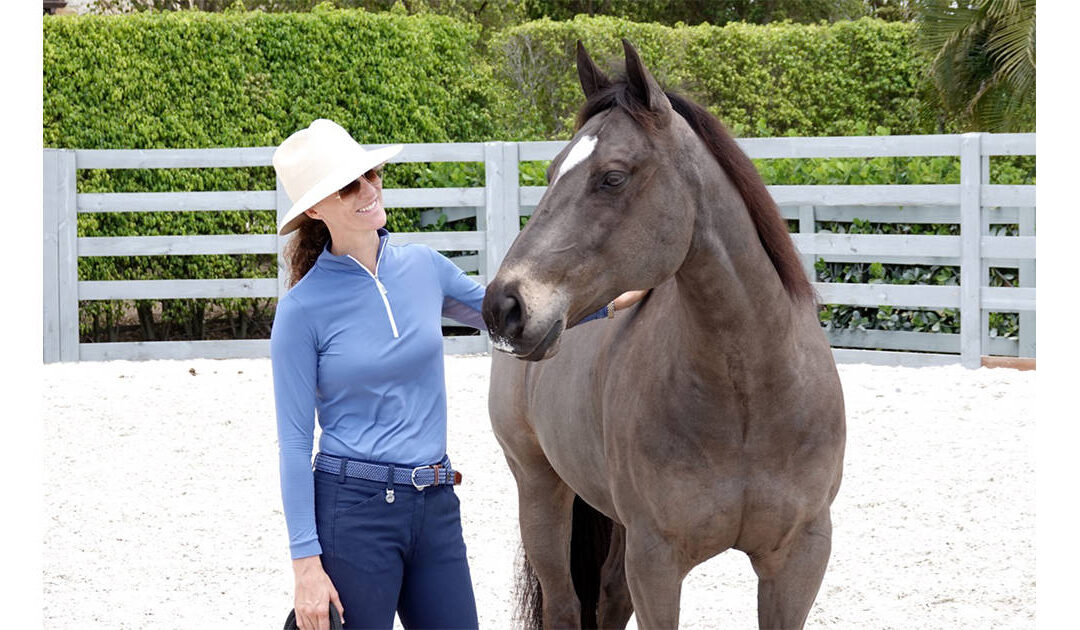
Building Connected Relationships
By Sarah Willeman
Building Connected Relationships
Horse-assisted psychotherapies show tremendous promise in helping people with trauma, which is notoriously difficult to treat. Trauma lives not only in our conscious mind but deeper in our nervous system, in parts of the brain responsible for basic survival. We can’t will our way—or talk our way—out of it. Horses can help people regulate those deeper brain regions. Recently I attended a training in one particular therapy model that’s captured my attention. It’s based on healing through connected relationships, beginning with the horse.
The Model
The model is called Natural Lifemanship. I found the name corny at first, but now I get it. Beyond just therapy, this is a way of being in the world—a guiding mindset for building relationships in all areas, with people and animals. The Natural Lifemanship school of therapy is called Trauma-Focused Equine-Assisted Psychotherapy (TF-EAP). It’s based on the structure and function of the brain, and it combines neurobiology with sound relationship principles. People learn these principles in the context of their relationship with the horse and can then transfer them to other relationships in their lives.
The founders, Bettina Shultz-Jobe and Tim Jobe, have backgrounds in psychotherapy with at-risk groups and horsemanship with challenging cases, like wild mustangs. (In his job starting mustangs, Tim could take a horse never before touched by a person and be riding him in a couple of hours—and not through coercive techniques.) In other words, the founders have deep expertise with both horses and psychology. And the method goes far beyond just that “magical” quality that contact with horses can have. This work has clear principles, organization, and purpose and has helped a lot of people.
The Neurobiology
A horse’s brain works in similar ways to that of a traumatized person: the lower, survival-focused brain regions are largely running the show.
The Equine Brain
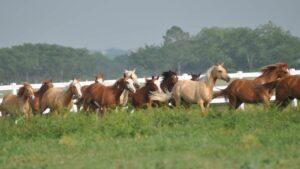
Horses’ brains are naturally built this way. Compared to humans, horses have a small neocortex, the region responsible for thinking. In herd life, only the lead mare needs to do much thinking. Horses mainly need their fight-or-flight reflexes, and they need to follow the herd. Survival is the horse’s essential skill, and it’s governed by the lower brain.
The Human Brain in Trauma
With trauma, a person becomes stuck in those same lower brain regions. The fight-or-flight response actually has a third component: it’s fight, flight, or freeze. When a person is stuck in these states, the survival regions of the brain get over-exercised, the nervous system becomes dysregulated, and the person has trouble regaining internal calm—the calm that’s necessary for good relationships and physical wellbeing.
That over-exercising of the lower brain leads to two things, anatomically: it builds up the lower brain and simultaneously sacrifices connections to the upper brain regions, where thinking and emotional connection happen. There’s a use-it-or-lose-it phenomenon with brain pathways. A traumatized person has trouble with self-regulation because many of the cross-brain connections that allow us to consciously calm our survival reflexes have been lost—or in the case of childhood trauma, perhaps never created.
Healing the Brain

The good news is the brain has plasticity, and new connections can be formed. The most effective trauma therapy will first regulate the lower brain and then engage the upper brain regions, thereby forming new pathways, helping all parts of the brain to integrate with each other for healthy functioning.
In Natural Lifemanship, it’s crucial to understand which part of the brain a horse or person is responding or reacting from. (Responding is associated with calm, integrated thinking; reacting is habitual and reflexive.) This understanding is important because if someone’s in survival mode and you try to reason with their thinking brain, they’re simply not there to receive what you have to say.
Horses demonstrate this phenomenon. A scared horse cannot learn. The best horsemen understand that training through intimidation will ultimately fail. The horse might robotically comply out of fear, but he’ll eventually make a panicked mistake, or try to run away from the rider’s signals, or become injured from the constant stress. But a horse in a calm, connected state can develop and flourish.
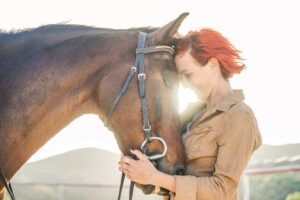
And here’s what gives rise to a powerful road to healing: humans and horses are born with an innate desire to connect.
We want to form safe, caring bonds with other beings; we yearn for experiences of trust and mutual understanding. In fact, as psychology’s well-established field of Attachment Theory teaches, we need those safe connections in order to have a healthy nervous system. Natural Lifemanship uses the power of emotional connection to heal and integrate the brain of both human and horse.
How Natural Lifemanship Works
Although the principles can be applied in any setting, the primary mode of TF-EAP is working with horses in the round pen.
The person gradually builds a healthy, connected relationship with the horse by learning to make requests of the horse, recognize the horse’s signals, and respond appropriately.
This process requires the person to become aware of her internal state, which the horse instinctually senses. (You could do the same outward gestures with different internal states and get a completely different reaction from the horse.) Throughout the work, the therapist and horse together help the person develop self-awareness and self-regulation, as new neural pathways are formed.
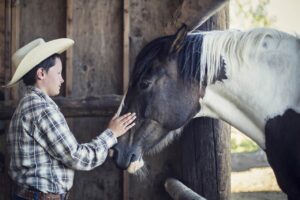
If the person’s nervous system is too agitated, the therapist can use specific techniques to calm those lower brain regions. Certain types of sensory input and movement—namely, rhythmic and repetitive—have been found to regulate and soothe the nervous system. (Think of a steady heartbeat or rocking a baby.) TF-EAP therapists use a variety of proven methods to help the client regulate her brain from the bottom up; in other words, beginning with the lowest brain region that needs support. The survival-focused brainstem has to settle before higher brain regions like the limbic system and neocortex can be engaged in relationship-building activities.
The Horse-Human Relationship
A connected relationship is one in which both parties choose to do what’s right for the relationship, and those choices are made freely and willingly.
In Natural Lifemanship, the relationship with the horse is not a metaphor or proxy for a human relationship; rather, it’s a real relationship. Although there’s apparent overlap with many schools of Natural Horsemanship, there are important differences, too. Instead of viewing the human as the horse’s leader and asking the horse to be submissive, Natural Lifemanship seeks a dynamic of mutual respect and trust, with self-regulation and good decision-making on both sides. The horse learns to pause, think and freely choose to do the right thing.
This key conceptual difference arises from the model’s basis in neurobiology. Just as a human can develop new neural pathways, a horse can, too. Interactions with humans offer a unique opportunity to actually build up the horse’s neocortex (and capacity for self-regulation) in a way that wouldn’t happen in herd life.
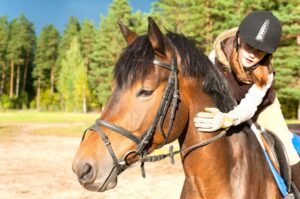
And because horses are so direct—their responses are immediate and honest—they provide excellent feedback for the person. Horses sense how we really feel. Communication is visceral and genuine. When it goes well, there is a simple, genuine pleasure. Connection is inherently rewarding for both human and horse.
As human and horse begin to co-regulate, they help each others’ nervous systems become calm, integrated and functional. And that quality of mutual benefit is essential for true connection and healing. Natural Lifemanship teaches a profoundly empowering skill: how to develop a strong relationship that’s good for both parties.
These are two key principles:
- “If it’s not good for both, it’s eventually not good for either.”
- “Regardless of the task or activity, connection is always the goal.”
These principles can be applied to work with horses and to all relationships with people and animals.
Compliance Versus Cooperation
In order to create connection, we need to understand the difference between compliance and cooperation. Compliance is a submissive action; it’s reflexive and robotic, arising from the lower brain’s survival instinct. On the other hand, cooperation is willing and freely chosen, arising from an integrated, whole-brain process in which the horse calmly figures out what to do.
So how do we tell the difference?
Well, it can be hard, because both can lead temporarily to very similar outward behaviors. Certainly, there are emotional cues, which can be subtle. But the real answer lies in the process.
Asking For Connection
As Natural Lifemanship explains, “Connection is predicated on a request.” In other words, rather than waiting for connection to magically happen, we need to ask for it. And how we ask—or how strongly we ask—has a major impact on the horse’s (or person’s) response.
The teaching is this: neither placate nor coerce. Both those extremes will eventually lead to aggressive behavior from the horse. (And as we talk about the horse here, continue to think of parallels with people.) Between those extremes lies the powerful zone of growth and connection.
An essential part of the process in TF-EAP is learning to make requests in an authoritative, calm manner, using the appropriate amount of pressure.
The Pressure Continuum
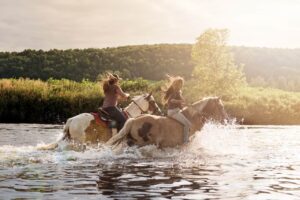
In this context, pressure is not a bad thing but just a fact of the universe. Making a request is a form of pressure. The goal is to use the least amount of pressure necessary.
Too little pressure and we’ll get ignored. Too much pressure and we’ll get fight-or-flight-type reactivity. Imagine an example: if someone yells at you when you’d’ve been happy to listen to a kind request, you might be mad (fight) or scared (flight) or too startled to know what to do (freeze).
Similarly, too much pressure can scare or anger a horse. If he’s in this state and still complies with our immediate request, he’s in his survival brain. This is not freely-chosen cooperation, and it’s not connection.
The appropriate amount of pressure compels the horse to search for an answer but leaves his options open, so he can figure it out and make a voluntary choice. This is the sweet spot of learning and relationship-building.
When we make a request of the horse, he can do one of three things: ignore, resist or cooperate. Herein lies one of the most powerful insights of the work: resistance is not necessarily bad. It means he’s trying to find an answer.
If he tries some wrong answers, we just keep the pressure the same. In order to do so, we need to stay calm and maintain control of our body energy, which can be hard to do when we’re not getting what we want. (Master horsewoman Sarah Dawson described this phenomenon during foal training: “I have to be careful I don’t take offense to any of the wrong answers he tries. He’s just trying to figure it out.”) We need self-awareness and self-regulation in order to succeed at this step.
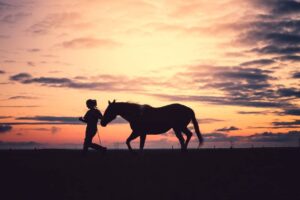
Then—and this is equally crucial—when the horse begins to find the right answer, we immediately release the pressure. Which probably sounds familiar; the timing of pressure and release is the most fundamental skill of horse training. But you’d be surprised how often people mess this up, with horses and with other humans.
In the Round Pen
So, what does all this look like in the round pen?
With the horse lose in the pen, we apply pressure by raising the energy of our body and directing that energy—movement, sound, internal state—toward the horse.
We might lift our arm or swing a rope; cluck or make other sounds; walk more energetically or, at the extreme end, stomp our feet. Depending on the sensitivity of the horse, we could get a response from just a small shift in our energy. The specific direction of our energy is crucial, beginning with the direction of our gaze.
And an important note: we need to learn to raise our energy while maintaining a state of calm. Energy and agitation are not the same thing.
In the following series of photos, I’m working with Cruz on attachment, which is a central part of the method. In this case, attachment means I’m asking him to follow me. Here’s what to look for:
The Request
To ask Cruz for attachment, I apply pressure to his hindquarters. (Another difference from typical horse training, which drives the horse forward from the hindquarters. Here, to ask him to move forward I’d apply pressure near the girth region, where my leg would be if I were riding.) To begin with the least amount of pressure, I simply look at his hindquarters, with my torso pointing toward that part of his body. If necessary, I can increase my body energy and movement from there.
The Release
I want him to turn his attention toward me and begin to move in my direction, so those are the things I reward by releasing pressure—specifically, by lowering my body energy/movement/gestures, backing away, softening my voice, or actually turning and walking away. I don’t reward submissive gestures like dropping his head and licking his lips. If he does those things after I’ve released the pressure, that’s all right; it’s a sign of relaxation (along with yawning, sighing or snorting in that particular relaxed horsey way). But if he does those things in response to pressure, it’s a reflexive, lower-brain attempt at submission, which we don’t want.
The Connection
When he attaches and follows me, I let myself really feel the enjoyment of it—which he senses and enjoys as well.
So let’s begin…
Cruz ignores the subtler signals, so I kiss to him and swing the rope to help me raise my body energy: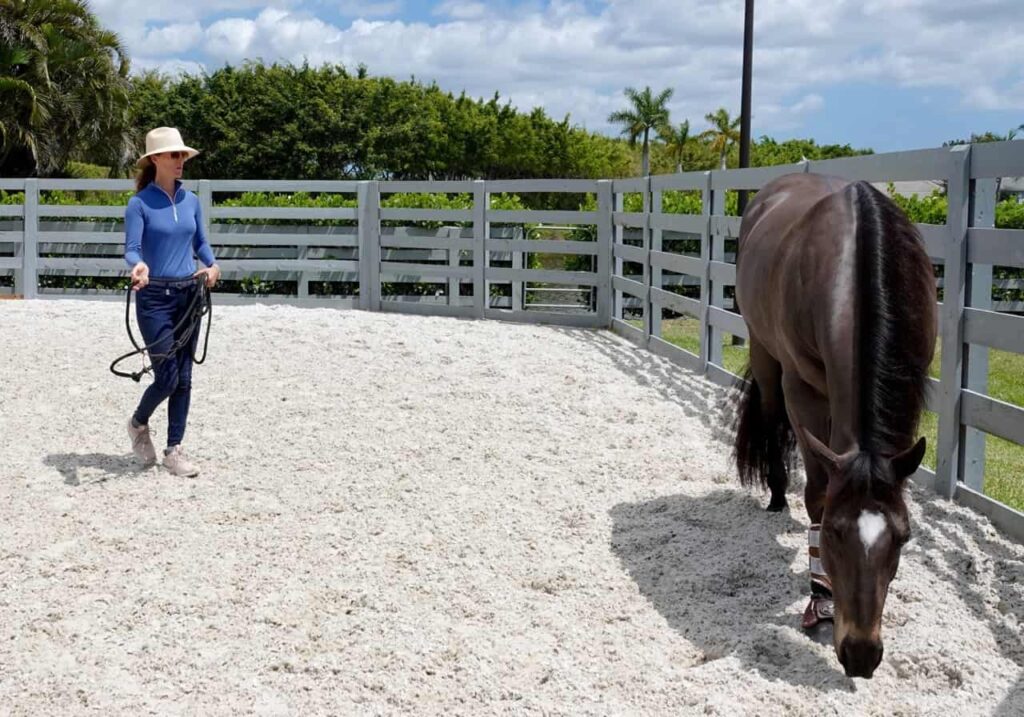
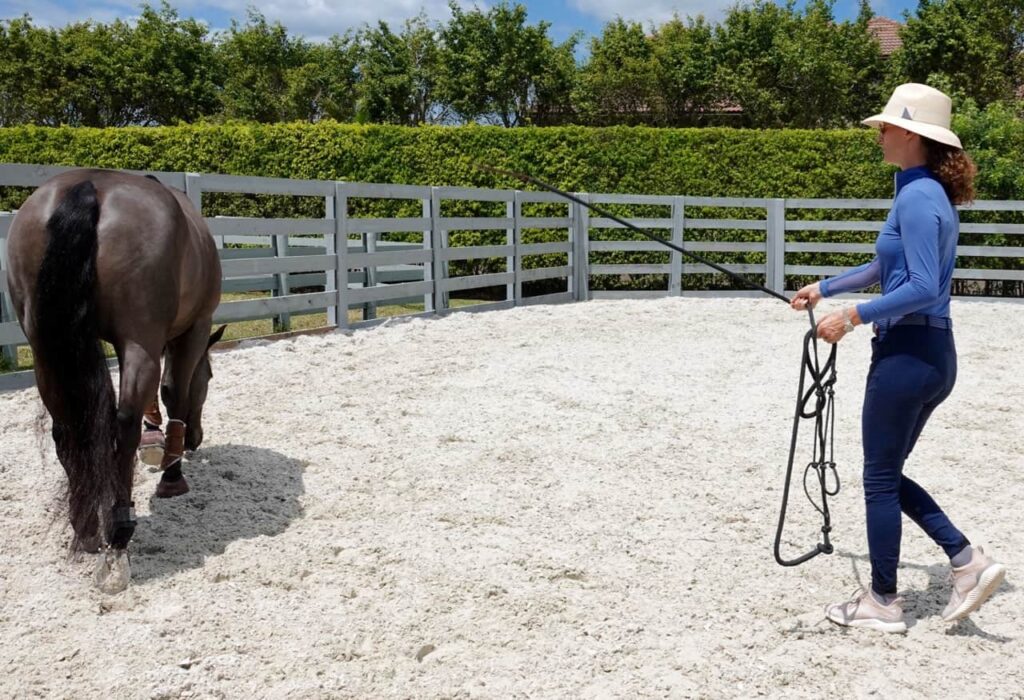
He searches for an answer by trotting away, but since that’s not what I’m asking, I keep the pressure the same:
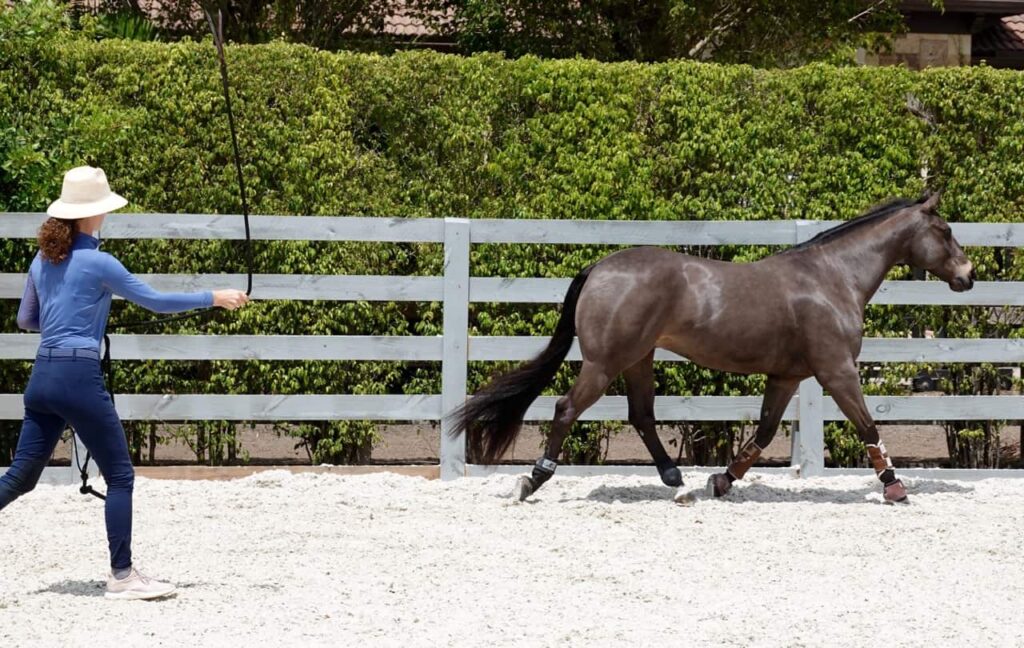
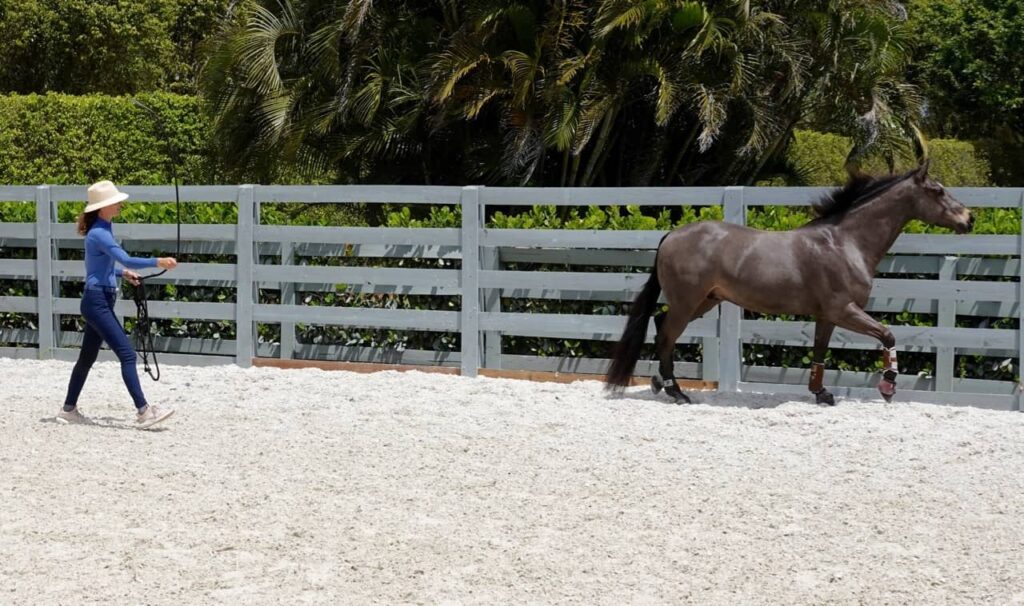
As soon as he starts to slow down and shift his attention toward me, I lower the rope and back away. He walks toward me; I release further by turning and walking away, allowing this sense of connection to soothe my own nervous system:
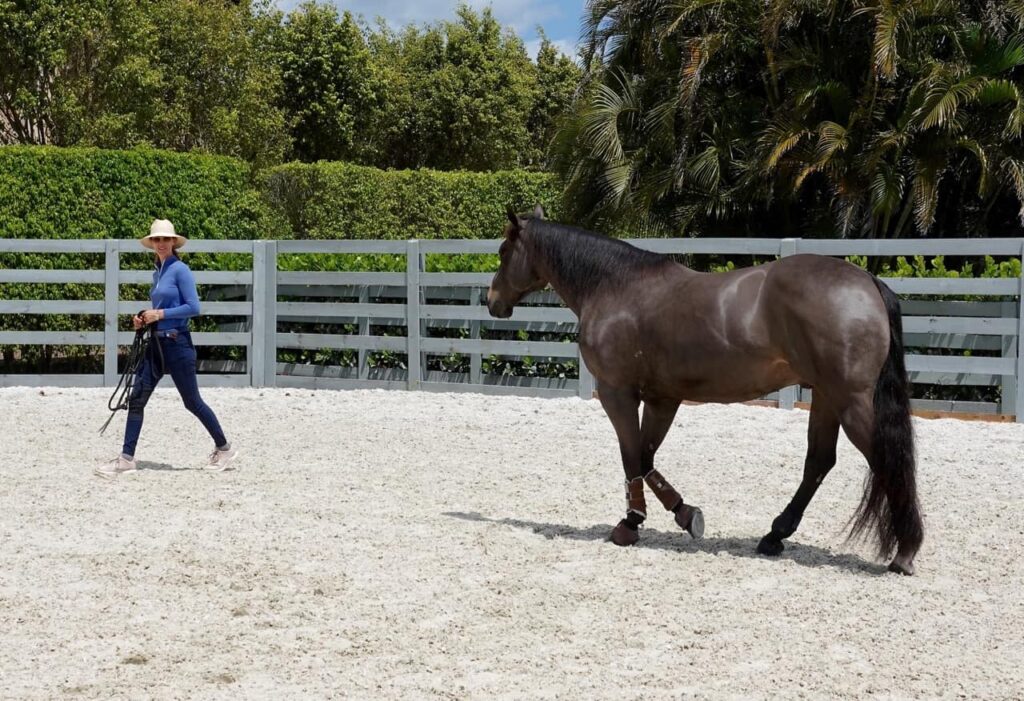
When he reaches me, I stand with him calmly, letting my body energy completely relax. I scratch his withers, praise him, and enjoy hanging out with him:
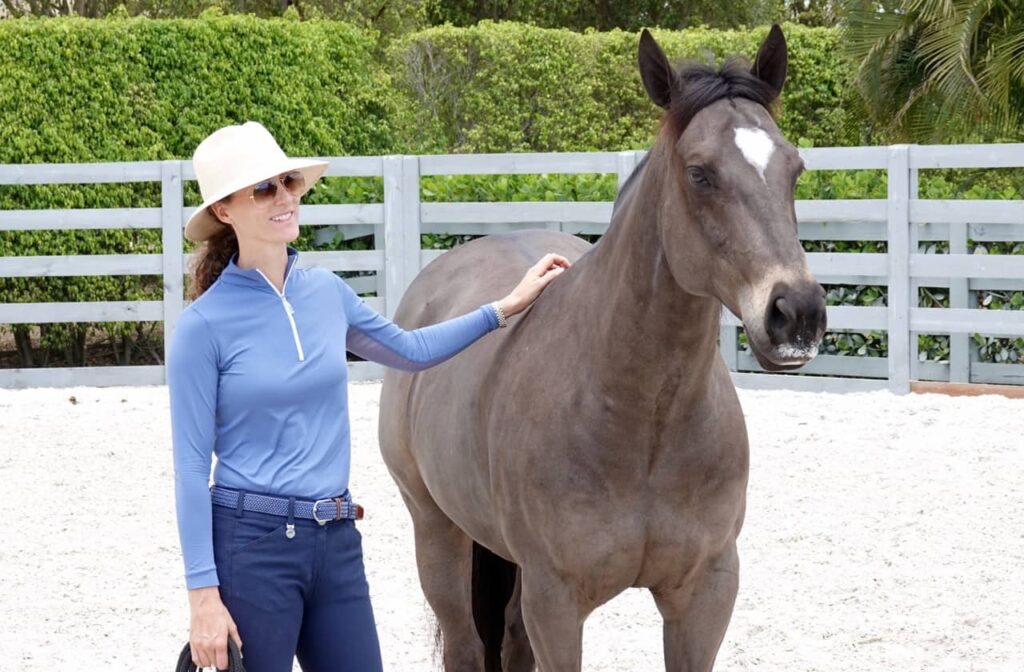
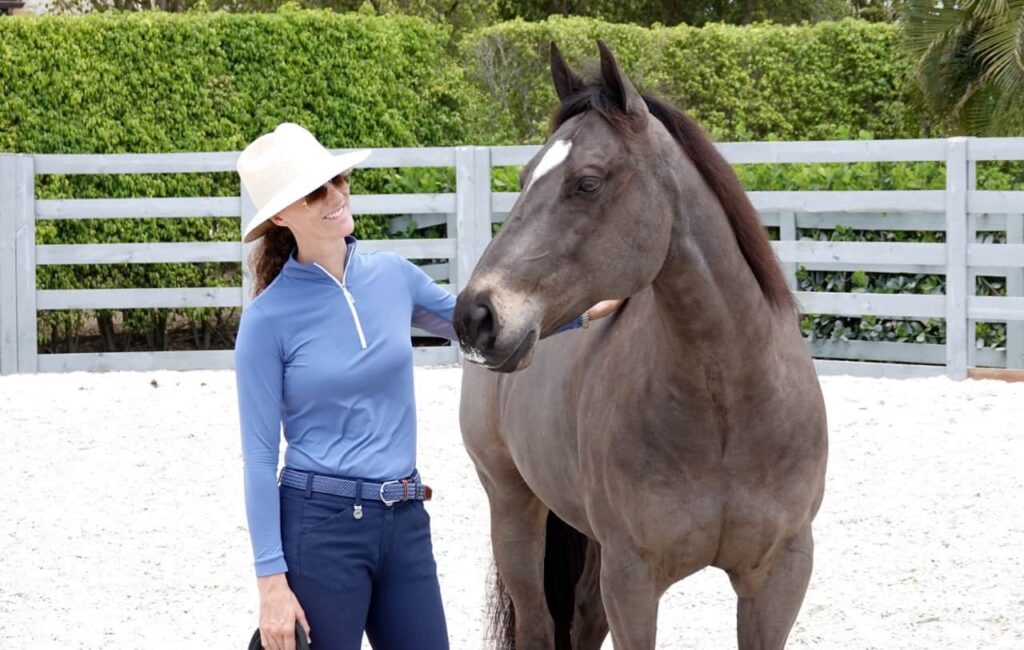
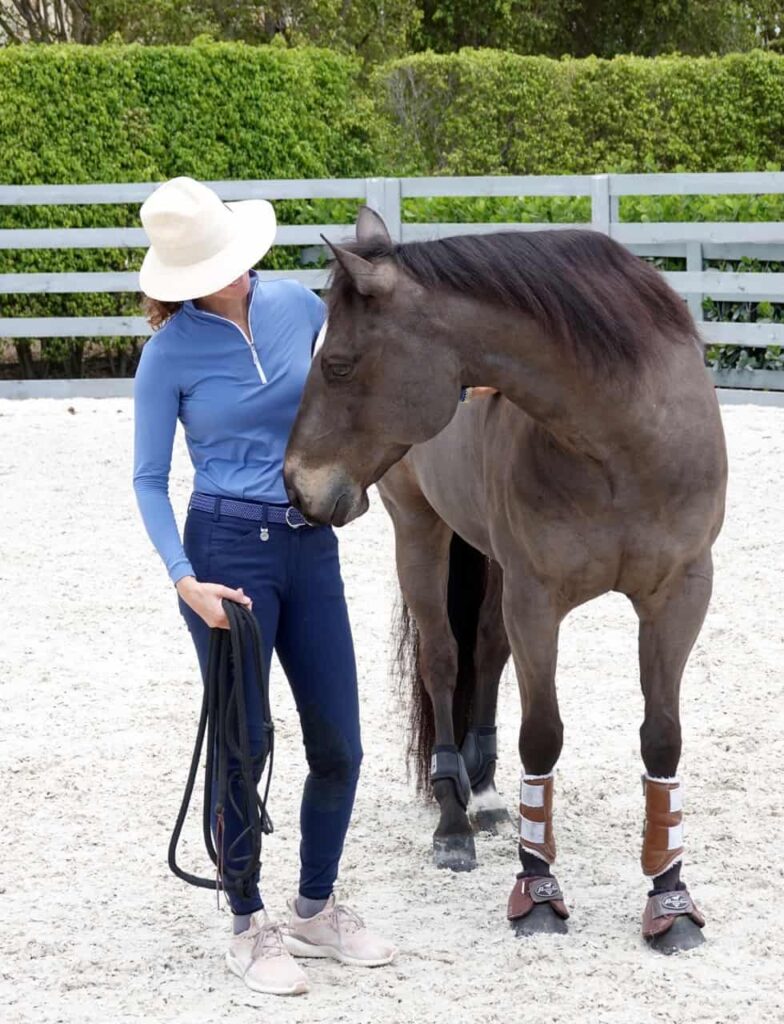
Then I ask him to follow me again, simply by looking toward his hindquarters and kissing to him. This time, he responds to those cues—much less pressure than before—and attaches:
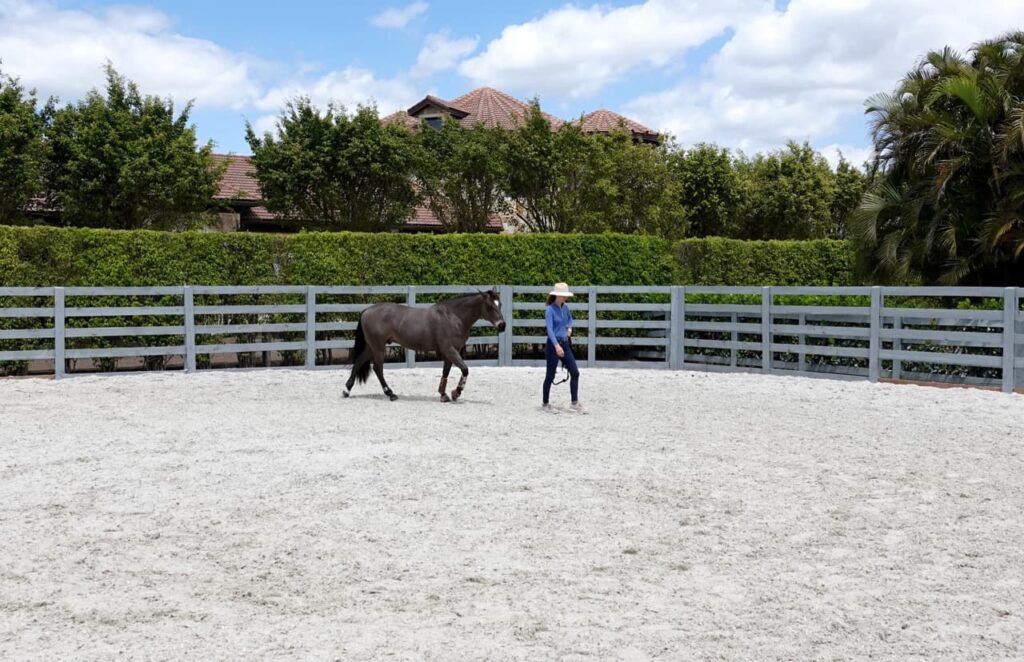

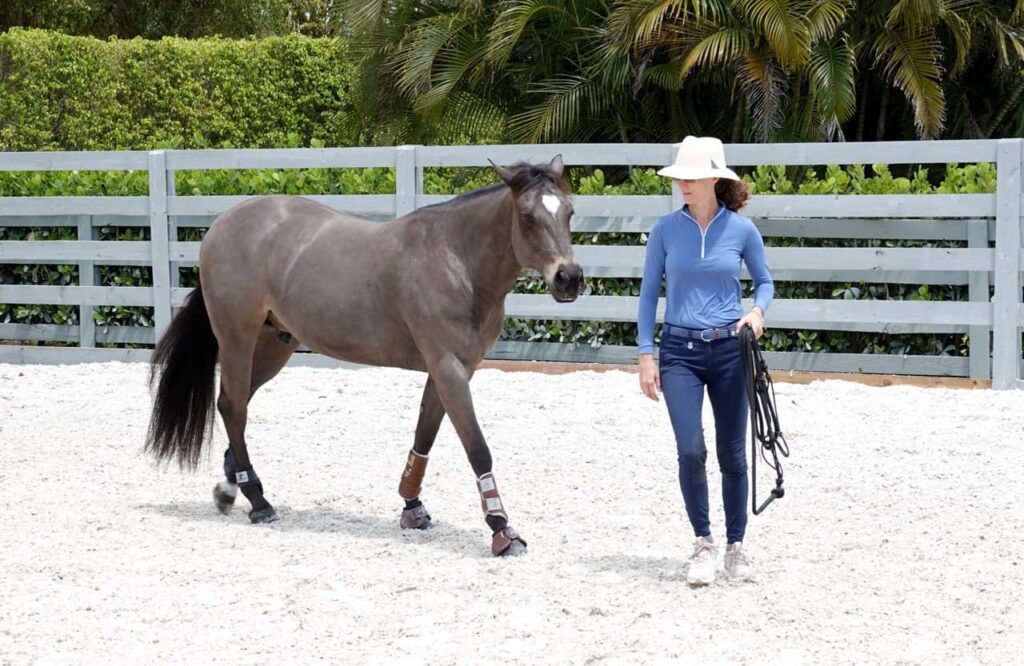
When his attention wanders, I simply notice and make the request again, using the least amount of pressure necessary:
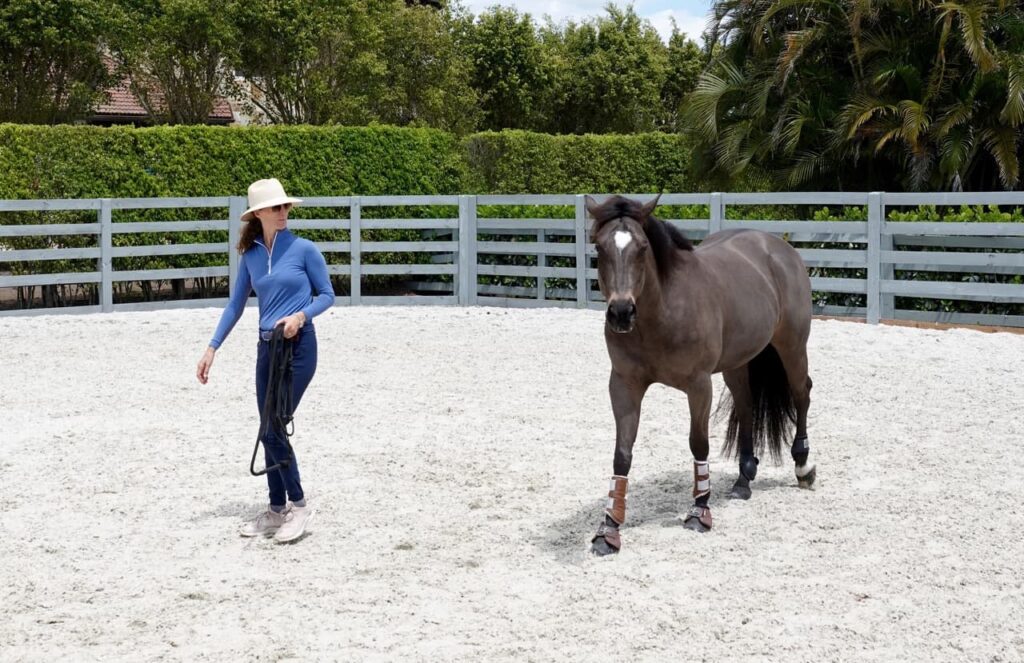
Again, he attaches, and we both enjoy the connection:
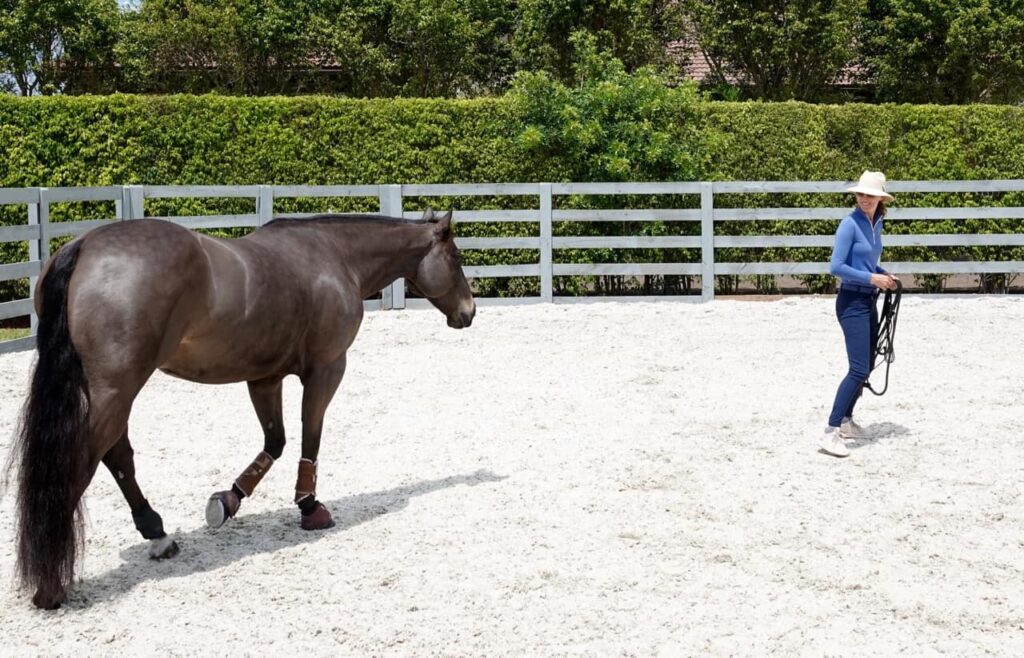
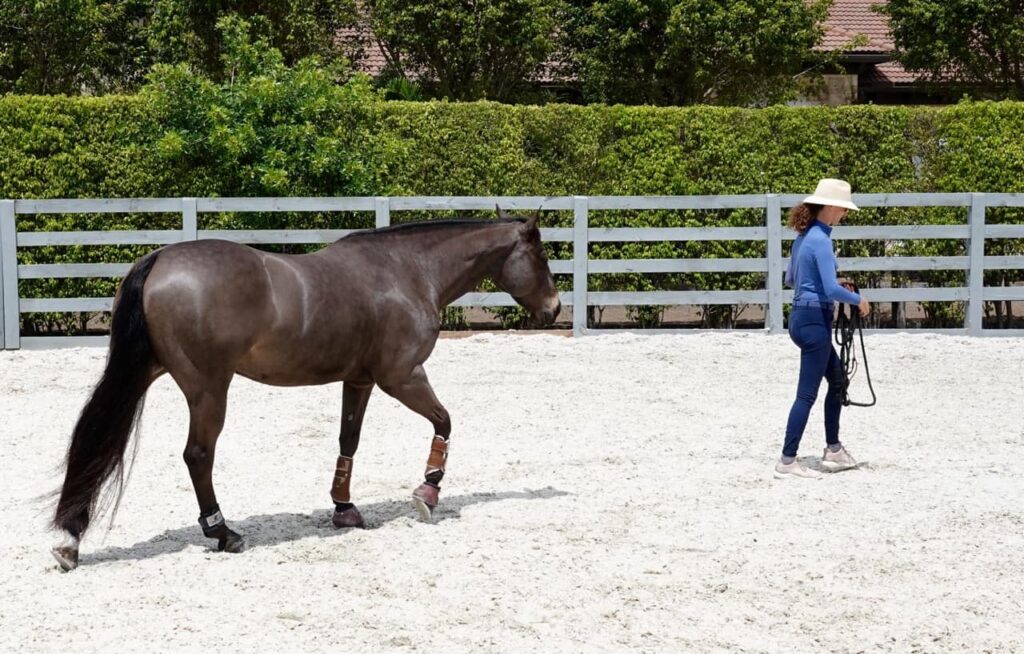
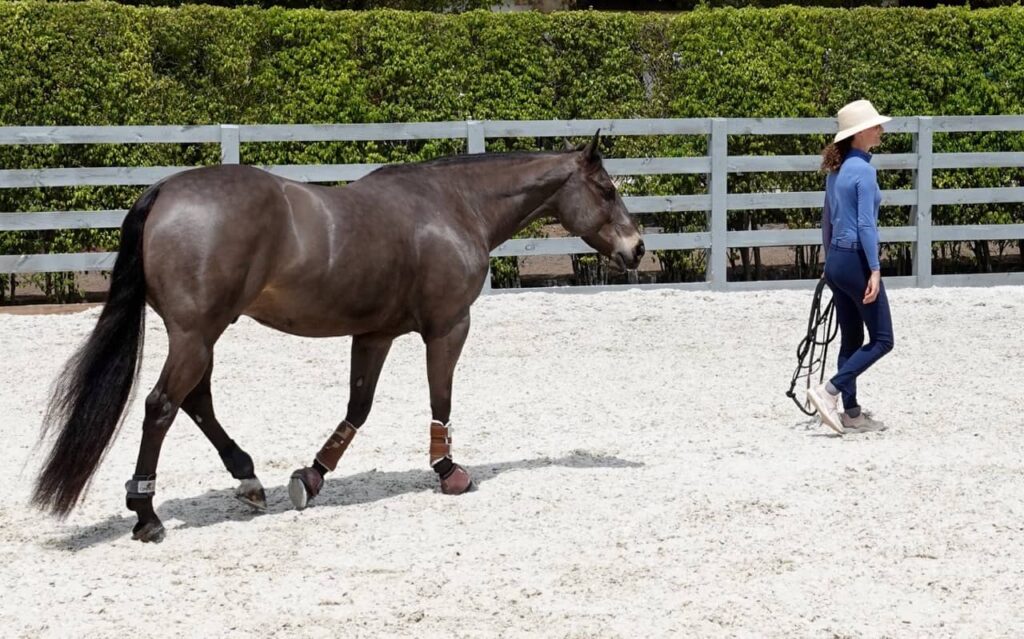
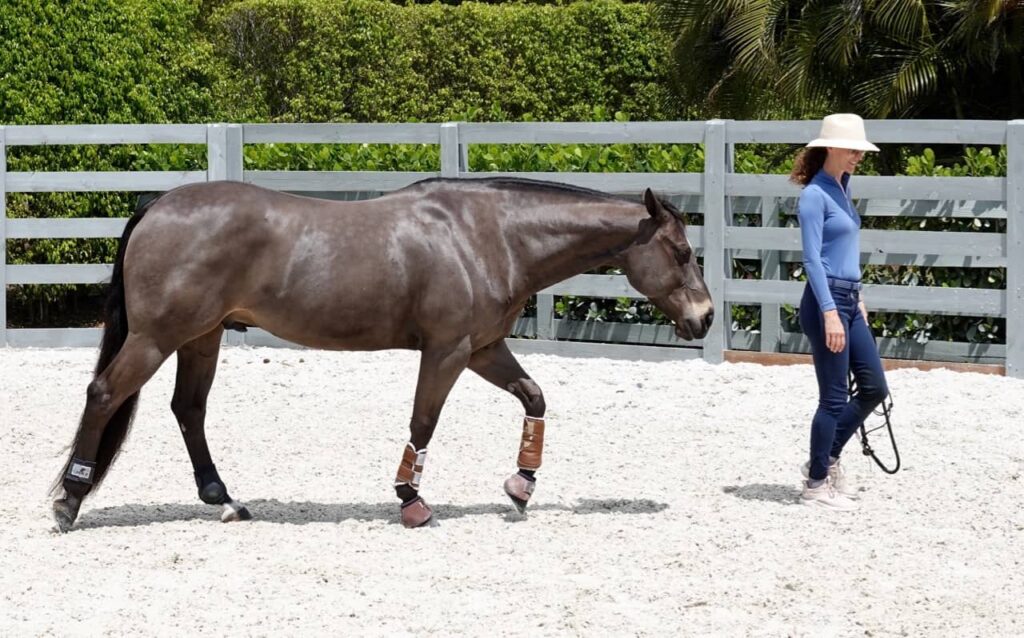
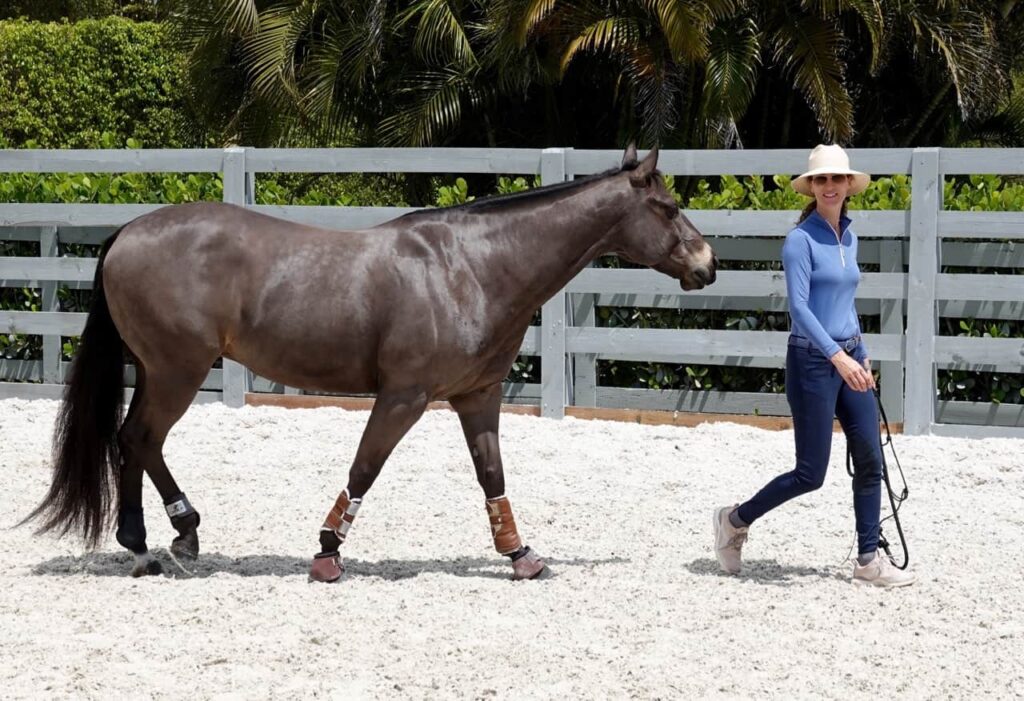
We finish by standing quietly together again. Even when he looks across the round pen, we’re still connected. He’s relaxed, not alarmed by whatever he sees, and he easily brings his attention back to me (notice the tilt of his ear in the second photo):
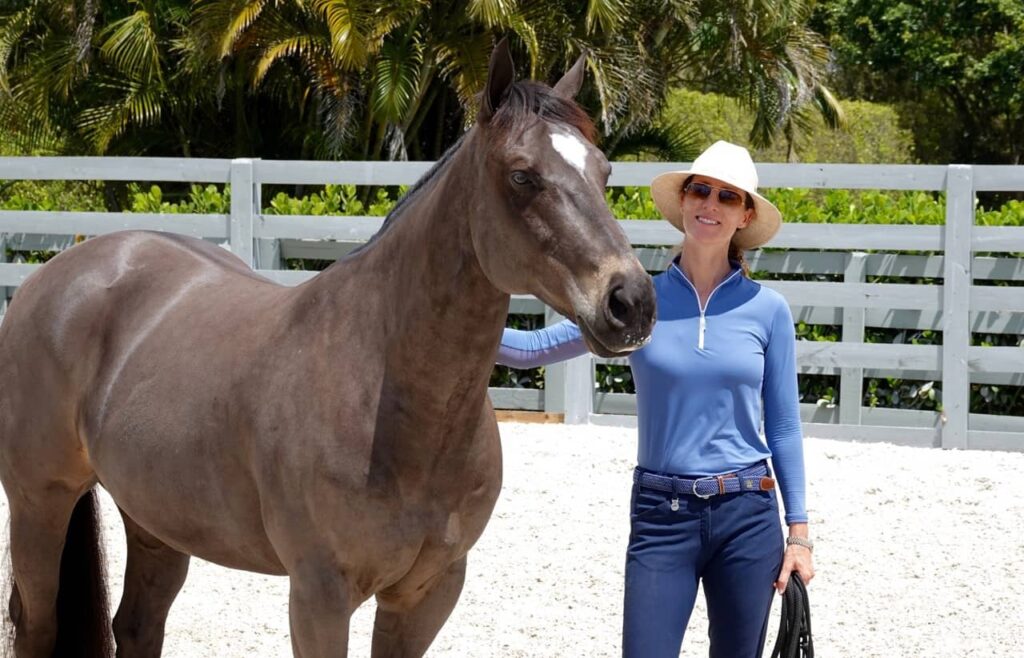
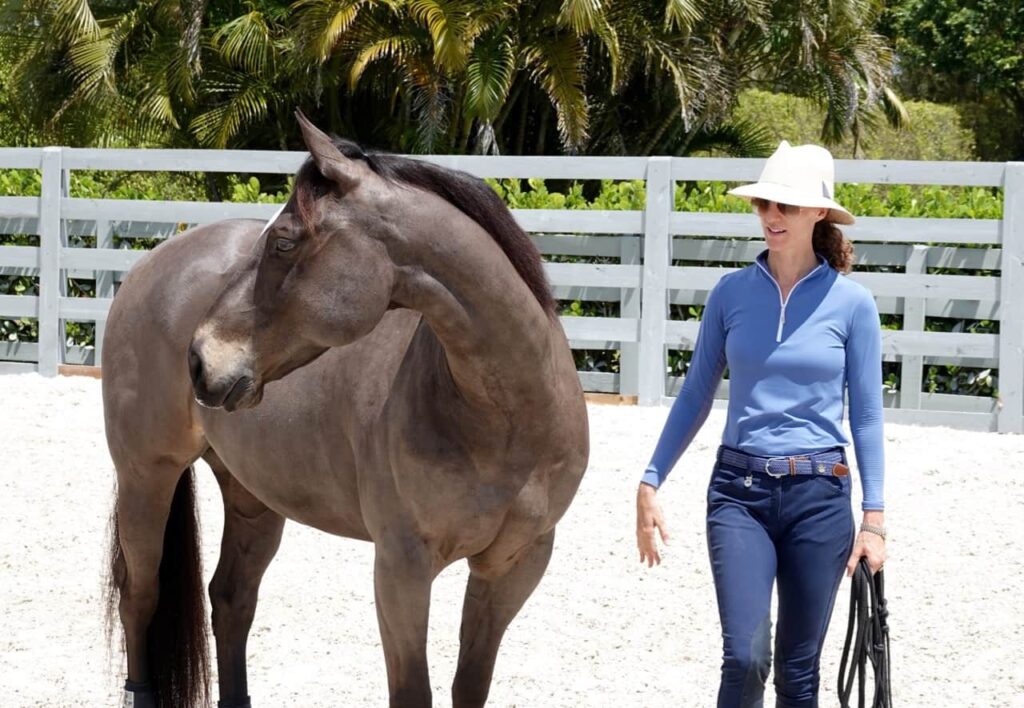
Photo series by my husband, Philip Richter
Horsemanship Insights
The legendary horseman Bill Steinkraus wrote, “Since the horse will have the last word in any case, we must try to ensure, through skill, tact, and moderation, that this last word is ‘yes.’”
Natural Lifemanship explains what that “skill, tact and moderation” consists of in its most evolved form: it’s about understanding the horse’s mind, including the neurobiology, in order to form a true partnership.
The very best compassionate horsemen might talk about leadership and submission (both Steinkraus and Sarah Dawson sometimes do, eg.) But in practice, the way they relate to their horses aligns closely with Natural Lifemanship principles. The best horsemen do create partnerships of mutual respect and trust. For them, this framework can provide some new language, a subtle shift in thinking, and a brain-based explanation for why their methods work. Plus maybe a few new tools and techniques, in the round pen and elsewhere.
In other cases, horse trainers could benefit from a major paradigm shift that encompasses not only their ideas but also their actions.
The Main Ideas
Submission should not be the goal. We do need to stop the horse from misbehaving because it’s not good for the relationship. But we don’t want the horse to be stuck in his lower, survival-based brain. We don’t want to dominate or control him; we want him to learn to appropriately control himself.
The most effective trainer neither coerces nor placates the horse. Instead, she uses well-timed pressure and release to have a conversation, with a goal of mutual understanding, trust, and connection. To succeed at this, she must be able to regulate her own internal state, in order to help the horse learn to regulate his. She does what’s right for the relationship, and the horse learns to do the same.
When horses learn to slow down, think, and freely choose to do the right thing, they become not only happier but better at their jobs, whether competing or trail-riding for pleasure.
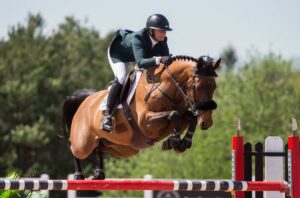
Connecting in Everyday Life
Although Natural Lifemanship arises from a framework of healing trauma, it can help everyone. We all benefit from enhanced self-awareness and self-regulation. We all benefit from relationship-building skills. Through this work, we can learn to stay calm and grounded when faced with challenge; to enjoy more fully those moments of connection with others, and to create the most fulfilling relationships possible with people and animals.
A Few Takeaways
Make connection the priority.
Whether talking with coworkers, walking your dog, or working out a disagreement with a family member, prioritize connection and you’ll get a much better outcome. Rather than fixating on issues, trying to control others, or insisting you’re right, try to connect. This approach leads to considerate listening and more genuine self-expression—which make for better immediate experiences and healthier relationships.
Plus, connection feels good; it cultivates wellbeing for yourself and those around you. As you go about your day, remember you can connect with others even in casual interactions.
Do what’s right for the relationship.
Let this principle guide you in your relationships with people and animals. Do what’s right for the relationship, and ask the other to do the same. This means you’ll communicate what you need and be aware of the other’s needs. You’ll make your own requests and listen to theirs.
Be aware of how much pressure you’re using.
When you communicate with others, be aware of how strongly you’re coming across. Think about what constitutes pressure in a given situation, and be mindful of how you apply it. Use the least amount of pressure necessary to get a response. And make sure you learn how to take the pressure off when you need to! (To learn more about this, you can attend a Natural Lifemanship Training.)
Cultivate your self-regulation.
In order to make use of these ideas, you need to be able to regulate your own system. Like well-traveled paths in the woods, the brain pathways we repeatedly use become our go-to reactions, while the ones we don’t use wither away. Notice your habitual thoughts and reactions. Learn to pause. You might make some subtle shifts that have a profound effect on how you feel and how you relate to others. A daily meditation practice can help.
Natural Lifemanship is both a science and an art. It helps us heal and evolve so that we can, in turn, have a positive impact on those around us. And the bottom line is, it just feels better when we live by these principles.
See more, and meet the horse-celebrity Grappa, at GrappaLane.com.

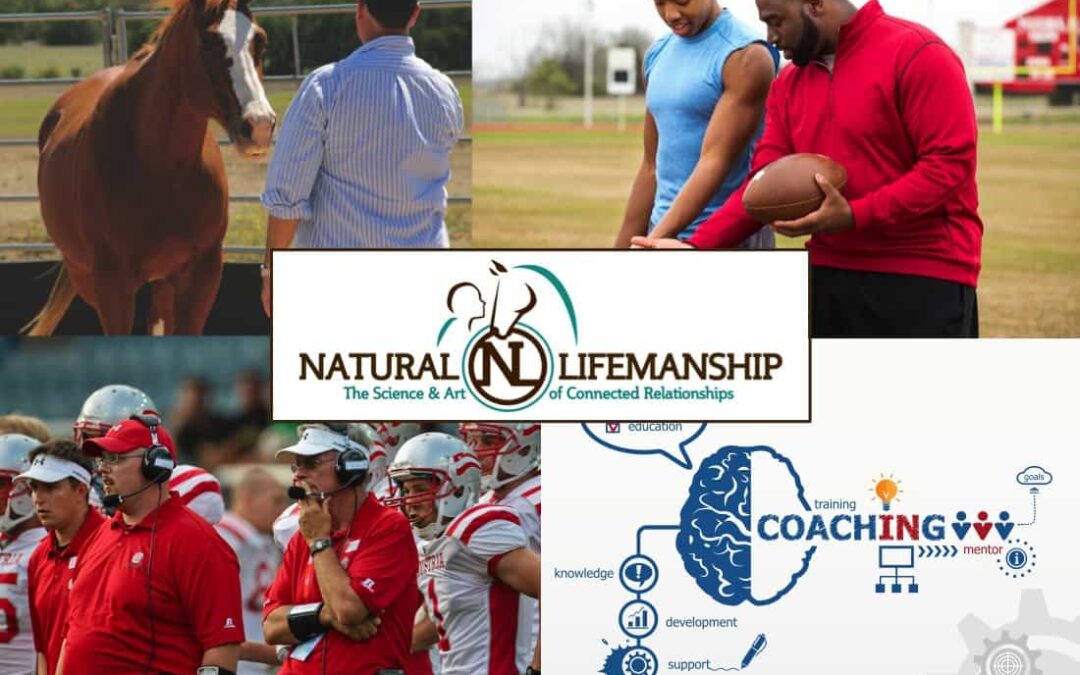
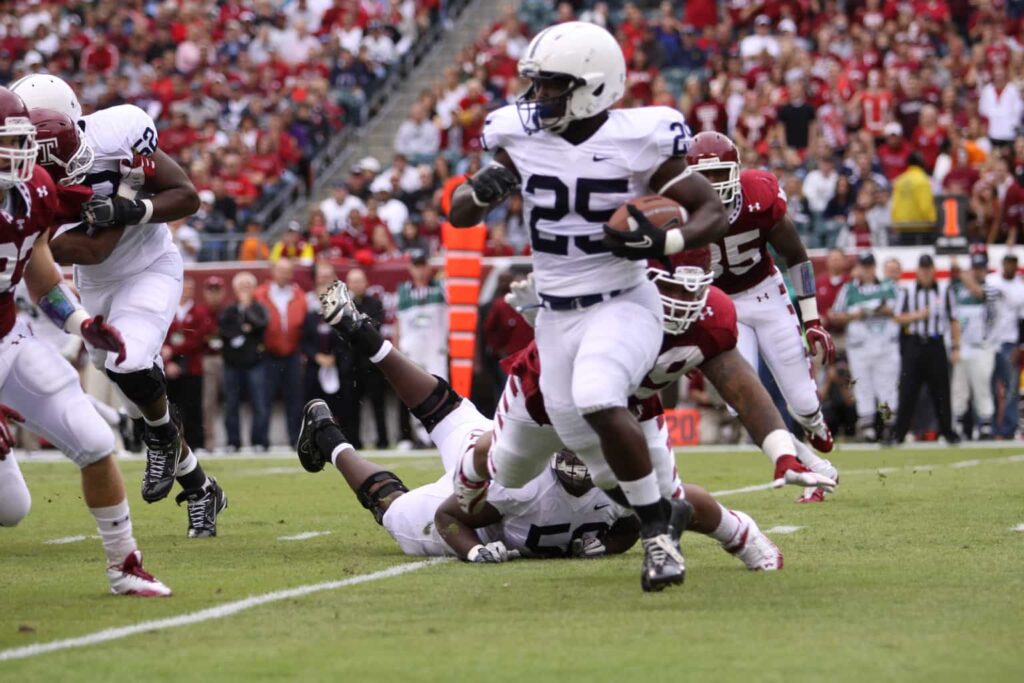
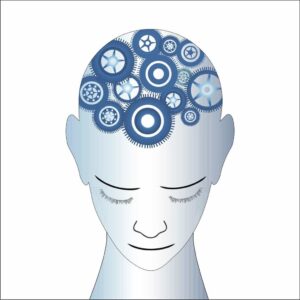

Recent Comments